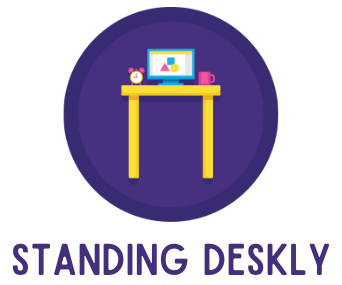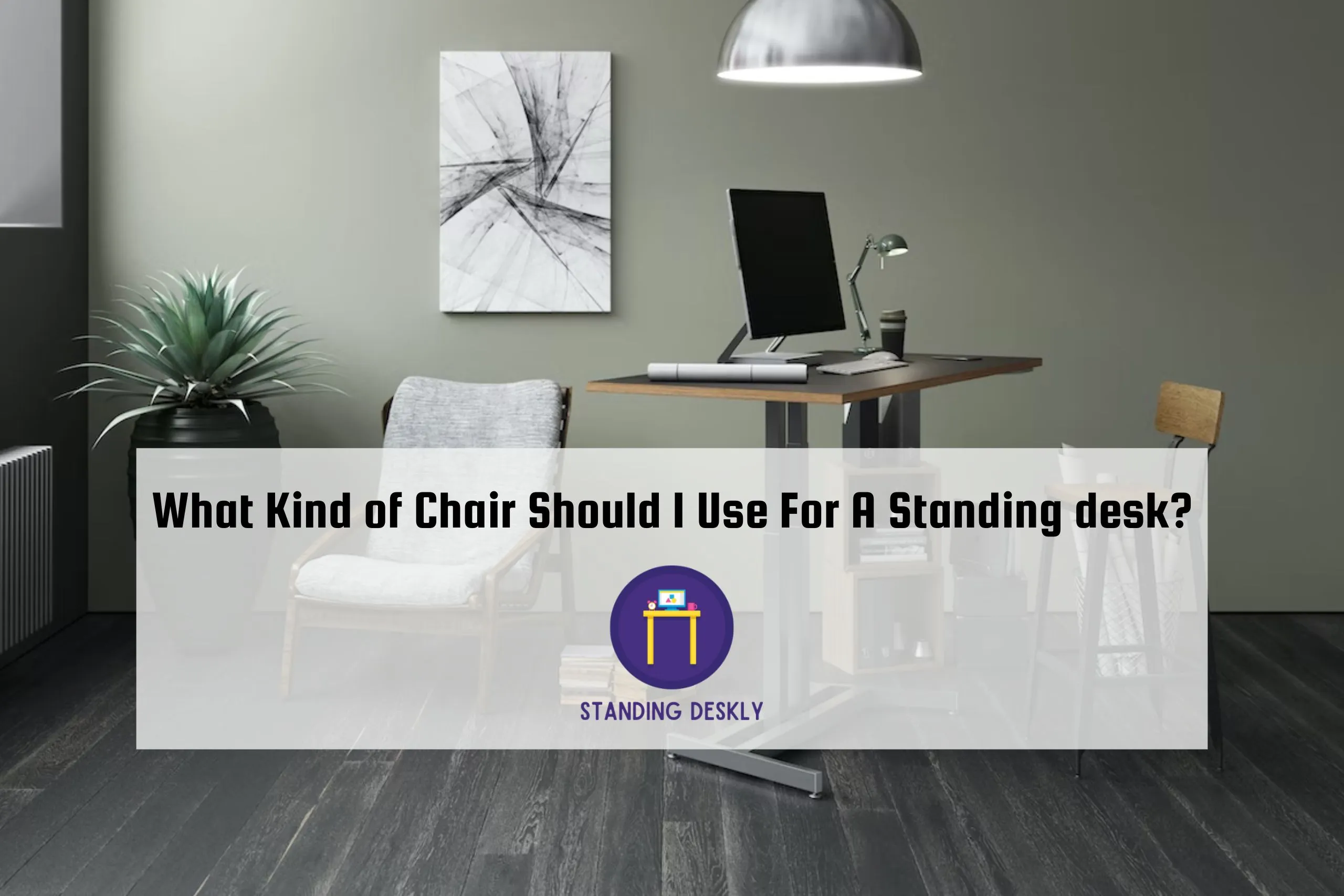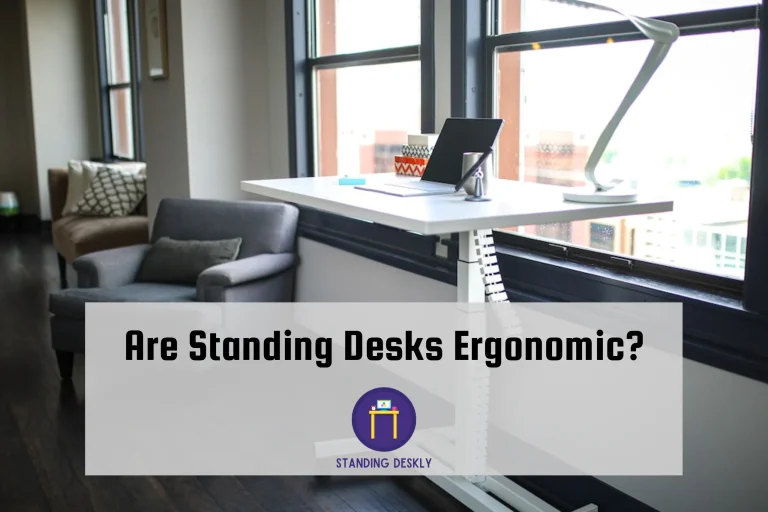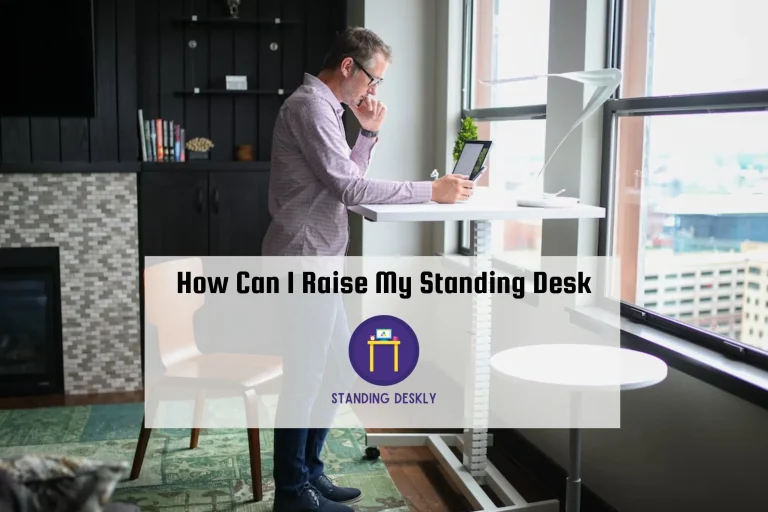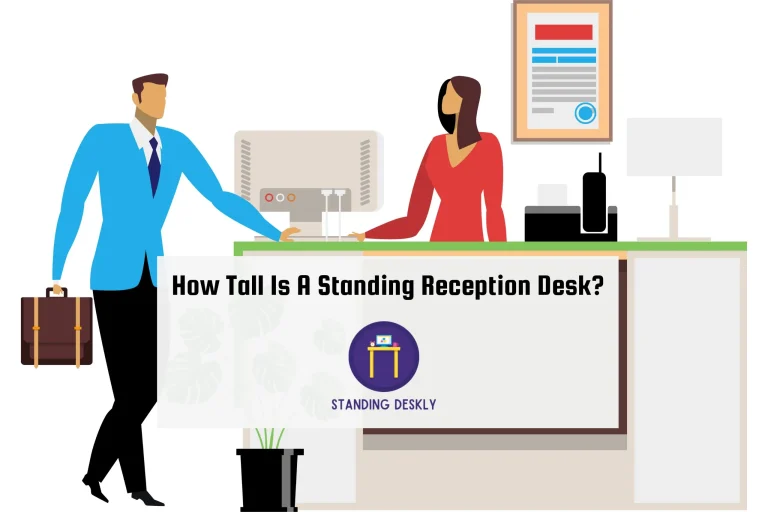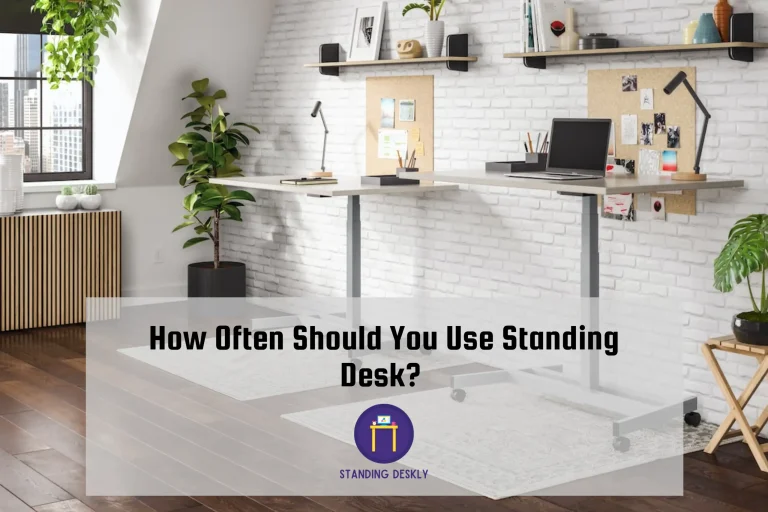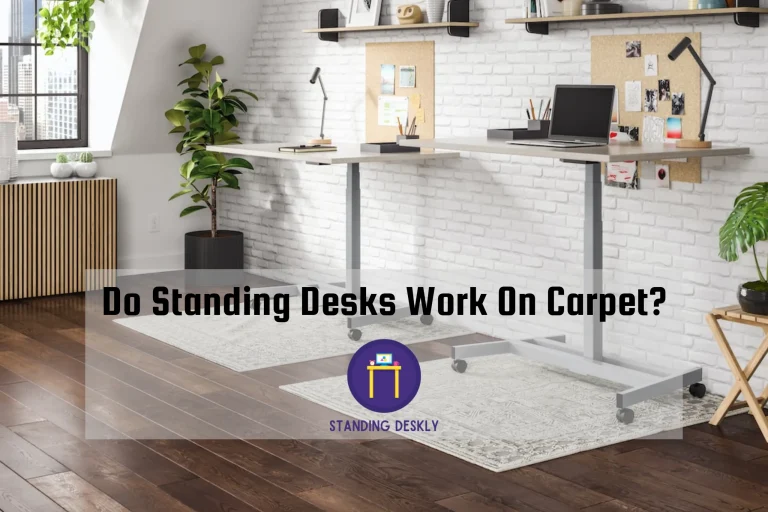What Kind of Chair Should I Use For A Standing desk?
When you use a standing desk, it’s important to remember that you’ll need a comfortable chair to rest your legs, ankles, and feet. An ergonomic chair is the best option for this purpose. It will give your lower back and spine the support they need and give your legs and feet the comfort they need.
Let’s take a closer look at what factors to consider when selecting a chair for a standing desk, how you should be sitting while using one, and whether or not you even need a chair at all.
Factors to Consider when Selecting a Chair for a Standing Desk
With the rise of technology and remote work, more people want furniture that is good for their bodies. A standing desk is one such piece of equipment that can improve the posture and comfort of workers. So, when you choose a chair for your standing desk, you should think about all of these things. Let’s find out the factors in detail:
Height and Adjustability
When choosing a chair for a standing desk, height and adjustability are two important factors to consider. It is crucial that the chair be able to be adjusted so that it can be used at various heights. This allows you to adjust the chair as needed to fit your particular needs and preferences. Ideally, look for chairs with adjustable seat heights ranging from 16′′ to 22′′ and adjustable armrests from 9″ to 13′′.
Having a chair that allows for easy raising and lowering of the seat height is also important. Many chairs come with gas lift cylinders, which allow you to easily adjust the height of the seat with a simple lever or button. This will make it easier for you to find a comfortable position when working at your standing desk.
It’s also important to make sure the chair has a frame that is suitable for being used at different heights. Many chairs have frames that are specifically designed for use at standing desks, while others are designed more generally and may not always be able to stand up well at higher heights. Make sure you take this into account when selecting a chair for your standing desk.
Comfort and Ergonomics
Comfort and ergonomics are the most important things to look for in a chair for a standing desk. As it can be uncomfortable to stand for long periods of time, the chair should give you enough support while taking pressure off your neck and back. Look for chairs that have adjustable height, seat depth, and armrests. This will allow you to adjust the chair to your exact specifications and make sure it fits your body correctly.
The seat should also have enough cushioning or padding to make sitting for long periods of time comfortable. A fabric that lets air through is better because it helps keep your body temperature stable when you sit for long periods of time. Some chairs also have lumbar support, which lets you change the tension of the backrest so that it supports the natural curve of your spine.
Try before you buy — if possible, test out different models of chairs in person before making a decision. Evaluate how the chair feels when you sit in it; does it fit your body correctly? Does it offer enough cushioning and support? Sitting in a chair is more personal than buying clothes; make sure it’s one that provides maximum comfort throughout the day.
Lumbar Support
Lumbar support is an important factor that needs to be taken into consideration, when choosing a chair for a standing desk. Lumbar support helps cushion your lower back so that your spine stays in the right place and you don’t put too much stress on your back. Having adequate lumbar support can help prevent lower back pain and improve posture.
A good way of finding out if a chair offers enough lumbar support is by sitting in it and making sure that you are comfortable. You should look for chairs with adjustable lumbar supports so that you can find the best fit for your body type. Also, many modern ergonomic chairs have lumbar supports that can be adjusted to the user’s preferences.
It’s also important to consider the type of material used for the lumbar support as well as its thickness. Foam or memory foam materials offer good cushioning and enough support for the spine. Mesh or breathable fabrics may be better for people who sweat or get too hot in their backs when they sit for long periods of time.
Additionally, thicker padding can provide better comfort over long periods of time but may also make it harder to accurately adjust the chair’s height.
Lastly, when selecting a chair for a standing desk, it’s essential to try it out before making your purchase in order to get a feel for how comfortable it is and how much lumbar support it provides. If you choose a chair with good lumbar support, you will be comfortable and productive all day long at work.
Mobility and Wheels
Mobility and wheels are important things to think about when choosing a chair for a standing desk. Wheels can provide extra flexibility when shifting from one position to another, making it easier to move around the office or between tasks.
The type of wheels needed depends on the floor surface and the weight of the chair. If you have hardwood floors, you may want to go with softer rubberized casters that will roll more smoothly and won’t damage your flooring. Heavier weight chairs may require stronger wheels that are designed to bear more weight and remain steady when handling heavier loads.
In addition to choosing wheels based on your flooring and chair weight, you’ll want to make sure they swivel easily so you can quickly turn in any direction without having to drag the chair along with you. You may also want to look for locking wheels, which allow you to keep the chair stationary while working at your standing desk.
Lastly, consider how easy it will be to move your chair out of the way when not in use—look for smaller sized chairs and/or ones that feature retractable arms, as these will take up less room in storage or even fit under a desk if necessary.
How Should You Sit at a Standing Desk?
When it comes to sitting at a standing desk, proper posture is key. It’s important to remember that you should not be leaning against the desk for extended periods of time. You should be standing in an upright position with your chest up and your core engaged.
You want to make sure your feet are hip-width apart, with your weight evenly distributed between both legs. It’s also important to relax your shoulders, keep them down and back, while keeping your wrists straight and arms close to the body.
Your hips should line up with the desk so that you don’t have to lean forward or backward to reach the keyboard or mouse. To achieve this, you may need to adjust the height of your chair or use a footrest if necessary.
Finally, when it comes to maintaining an ergonomic posture while using a standing desk, you want to be sure that your monitor is level with your eyes and at least an arm’s length away from you. That way, you can avoid straining your neck or back while looking at the screen for long periods of time.
Should You Use a Stool with a Standing Desk?
Using a stool with a standing desk is an option for those who want to be more dynamic and active while working. Many people prefer a stool when using a standing desk, as it allows them to shift their weight throughout the day, which can help relieve pressure points and provide a more comfortable working experience.
A stool also allows you to take short breaks from standing by sitting down for brief periods of time, especially if you need to rest your legs for a few minutes. Also, a stool makes it easier to change the height of your standing desk, which can save you time and energy when you want to switch between sitting and standing.
Conclusion
In conclusion, selecting the right chair for your standing desk is essential to maintaining comfort and good posture during your workday. It should provide enough support to prevent slouching and alleviate back pain. Factors to consider include height and adjustability, comfort and ergonomics, lumbar support, mobility, and wheels, as well as how you should sit at a standing desk.
Additionally, if you are uncomfortable using a chair, you can opt for a stool instead. In the end, finding the right chair will make sure that you have a good and productive time with your standing desk.
Hey there!
I hope you’re enjoying the article you’re reading! I value your feedback and would love to hear your thoughts on how to improve it. If you have any suggestions, please feel free to send an email at editorial@standingdeskly.com along with the article URL.
Thank you for taking the time to help me improve my content. Your suggestions are greatly appreciated!

I’m the author and developer of Standingdeskly, the go-to site for standing desk enthusiasts. I provide comprehensive reviews of standing desks along with office setup tips. Combining years of research and personal experience, our goal is to make it easy for you to find the perfect standing desk tailored to your needs.
